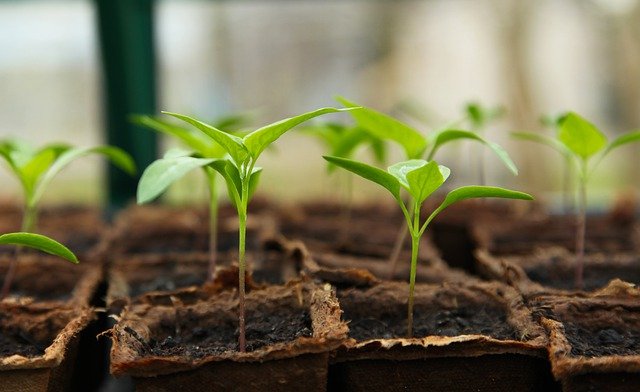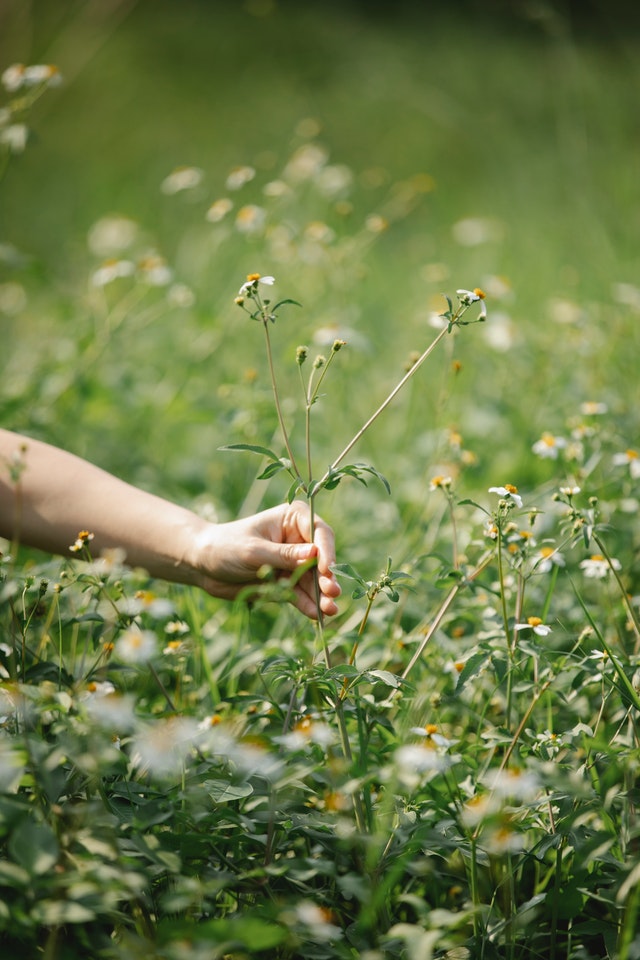Organic Fertilizer
Organic fertilizers originate from plant material such as seaweed and animal products, for example blood, fish and bone or pelleted chicken manure. Liquid fertilizers, such as comfrey or nettle tea, can be made from the bruised leaves of the plants theat are then left to soak in a suitable lidded container. The resultant liquid is then diluted in water to produce a free, effective fertilizer. Organic fertilizers release their ingredients more slowly and usually need a period of time after application to break-down in the soil and become available to plants.
Preparing The Site for Planting
Some weeks before you are ready to plant, maybe whilst you’re choosing plants or waiting for the right time to plant, you can begin preparing the soil.
Dealing With Weeds
Determind, perennial weeds will need to be eradicated permanently or they will continue to reappear. They will be difficult to remove if they’re growing through the new planting and will compete with the new plants for resources. Patience is needed if you garden organically because all the methods described take time to be effective.
Beware of trying to dig up intransigent weeds such as bindweed, because they can indvertently be propagated when tiny pieces of root are left behind in the soil. The simplest method of eliminating weeds without using chemicals is to regularly cut them back; this weakens them, and eventually they just give up.
An area of weeds can also be killed by coveing with a strong material such as polythene, which blocks out light and rainfall and eventually kills them, although it has to be said that most materials do look unsightly.
If you are prepared to use chemicals then glyphosate is very effective, killing plants right back to their root. Take care when applying it because it kills off any neighbouring plants that it also touches. It is only effective when used as the plat is growing, so shouldn’t be used during the winter. Large plats can be cut back and reduced in size so that only a few leaves near the base have to be treated.
Whilst preparing the soil remember that although you can compost green waste, do not include the roots of weeds such as couch grass, bindweed, ground elder or other perennial weeds, or plats that have been treated with weed-killer.
Adding Fertilizer and Compost
Dig in some fertilizer, such as chicken manure pellets, a couple of weeks in advance of planting to give them time to break down into the soil. And if you don’t have enough of your own compost, order plenty of soil-improving compost.
Moving Established Shrubs
It’s unlikely that you’re starting with a garden that is completely devoid of plants, so some of the preparation may include either moving some shrubs to a new place in your garden or giving them away.
There is no guarantee of survival when moving established plants, and some species such as roses and magnolias will object strongly, possibly by giving up completely. However, there are some measures that can be taken to reduce the risk, and choosing the right time to plant is one of them. The best time for moving deciduous plants is from late October to the middle of March. Evergreens are best moved during October when the soil still has some residual warmth, or late March when it is beginning to warm up again. When polants are dug up they will continue tolose moisture through their leaves but are unable to take up any through their roots, so avoid digging up plants on sunny and warm days in autumn.
Water the plant a few days before transplanting to let the roots take up water until they’re settled in their new position; the moist soil will be better able to stick to the roots a protect them during the move.
Before digging up the plant prepare the new site by incorporating plenty of organic compost and forking through the soil in the base to help drainage. Make sure that the planting hole is wider and deeper than you estimate the size of the root-ball to be. Dig up the plant carefully, causing as little damage to the roots as possible and trying to keep some soil around the roots. Lift it onto some form of sheeting-damp sacking would be perfect-and cover the roots to prevent them drying out until the plant is happily planted in its new position.
If you can’t replant it immediately-perhaps it’s going to a new home elsewhere-either put it in a pot in the shade or dig a temporary hole or trench and gently heel it in so that the roots are covered until it can be moved to its permanent position. Many large tree nurseries have the specialist gear for moving mature trees and shrubs, and calling in a specialist could be the best choice if you have a mature tree that has to be moved.




